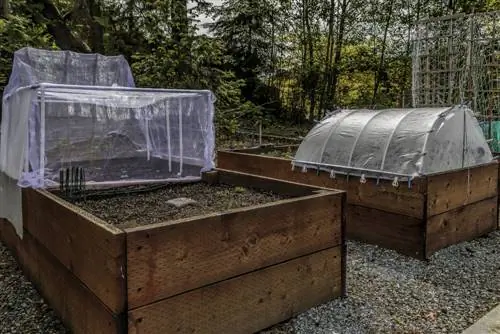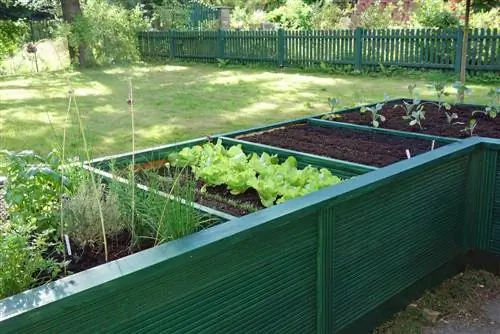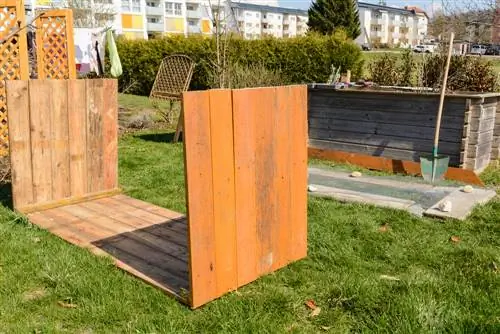- Author admin [email protected].
- Public 2023-12-16 16:46.
- Last modified 2025-01-23 11:21.
With a cover made of glass, acrylic or foil, you can transform your raised bed into a cold frame in no time. This can be easily removed later if necessary, so that you can use your bed in different ways.

How can I convert my raised bed into a cold frame?
To convert a raised bed into a cold frame, you can use a cover made of glass, acrylic or foil. Place them diagonally towards the south to capture the sun's rays and retain heat. Alternatives are cold frame attachments or polytunnels.
Cold frame extends the gardening season
Plants grown under foil or glass benefit from warm and moist air. The climate prevailing in a cold frame ensures faster and more uniform growth, which has a particularly positive effect on plant propagation and the cultivation of young plants. In addition, in the protected atmosphere of a cold frame, fresh vegetables can be grown and harvested much earlier in the spring and a few weeks longer in the fall - if you combine the advantages of a raised frame with those of a cold frame, you can start growing from mid to late February Lettuce and other early vegetables start. Once the last night frosts are over at the end of May, you can remove the attachment and the cold frame becomes a normal raised bed again.
How to convert your raised bed into a cold frame
There are various ways to convert the raised bed into a cold frame. Covers, for example made of glass or acrylic, should always be installed at a slight angle, facing south. This means that the rays of the sun, which is still low on the horizon in the evening and morning, reach the plants in the bed. You should also make sure that the cover of the attachment fits well with the edge of the raised bed - the more effectively the heat is stored inside the cold frame.
Cold frame attachment made of glass or acrylic
A cold frame attachment for the raised bed can be bought ready-made or easily built yourself. All you need is a few slats that you saw to fit the bed box and put together. The lid also consists of a slatted frame in which glass or acrylic panes (transparent foil also works) are attached. The back part of the cold frame is always significantly higher than the front, after all you want to catch the last ray of sunshine. The lid also needs an anchor so that it can be set up for ventilation. A cold frame attachment made of aluminum and double-wall panels made of plastic is particularly light.
Polytunnel
A polytunnel is probably the simplest variant of a cold frame. To do this, insert several curved metal rods into the soil of the raised bed at a distance of approx. 40 centimeters so that they span the narrow side. In a wooden raised bed, you can attach eyelets on the inside of the sides and insert the metal rods into them. Pull a foil over the rods and attach it to the side, e.g. B. with stones. To ventilate and harvest, simply push up the film on the sides.
Rotting manure warms the plants from below
In autumn or late winter, fill the raised bed with horse, cattle or small animal manure to a height of around 10 to 20 centimeters and then fill a layer of plant substrate about 15 centimeters thick on top, so that the rotting manure acts as underfloor heating for those in need of warmth plantlet. If you don't have any manure on hand, you can also use pellets made from cow dung (€22.00 on Amazon), which can be bought in handy buckets. But straw with husks, well soaked in nettle manure, can also replace animal dung.
Tip
If the raised bed is provided with a polytunnel or a glass or acrylic cover, you only need to water a little. Under such a cover, the substrate develops permanent moisture, which makes constant watering unnecessary. However, ventilate regularly and often to prevent mold from settling in this humid microclimate.






